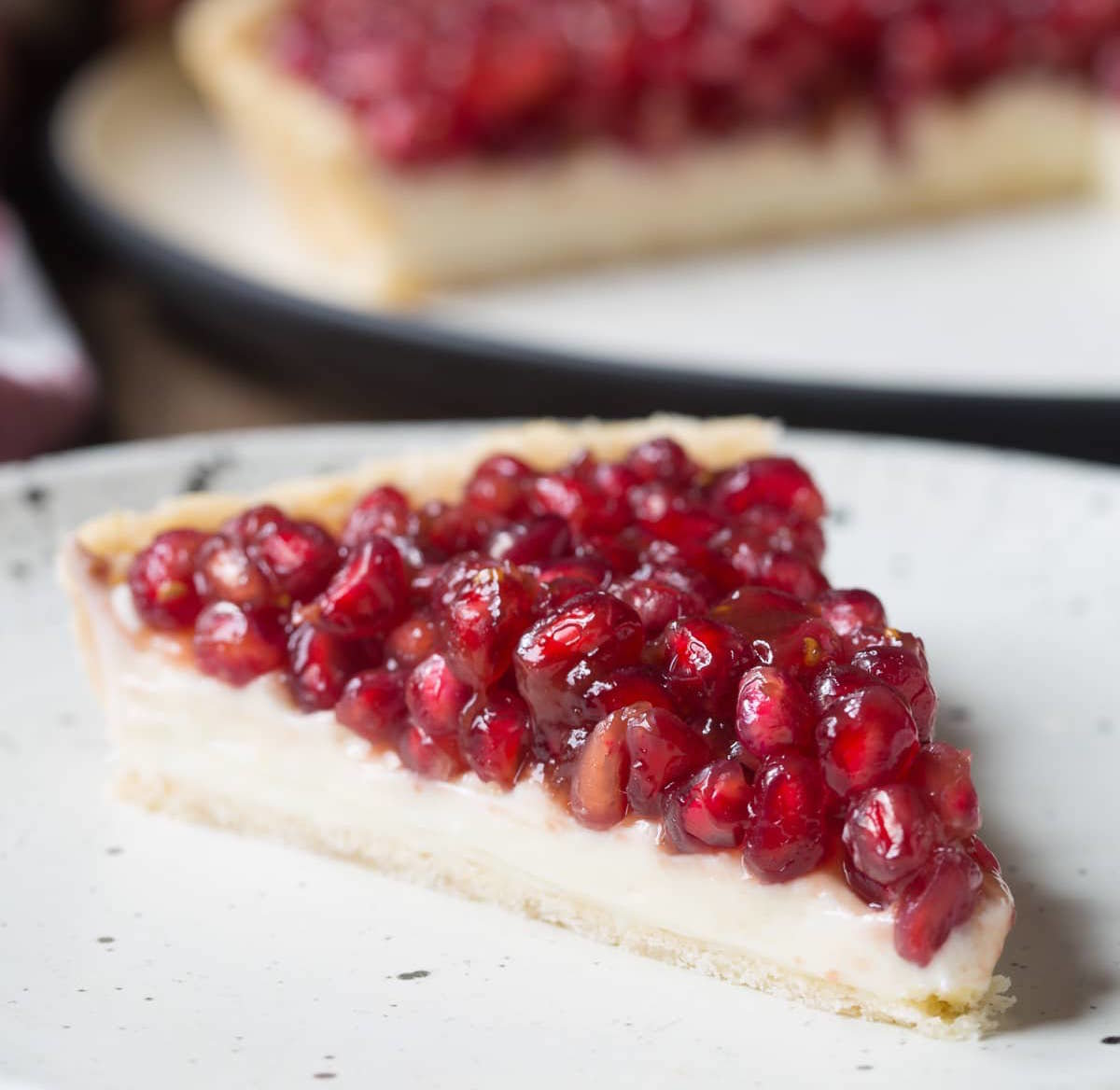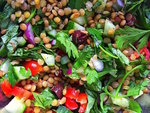Celebrating our fruitful trees on Tu B’Shevat
When I was a kid, each week for ten weeks before Tu B’Shevat (which begins Sunday night, Feb. 5), we brought 10 cents to school and bought a stamp which formed another leaf of a tree which, when completed, would be sent to Israel. A few weeks later, we would get a certificate that stated that a tree had been planted in my name in Israel. I believed that when I’d eventually go to Israel, I would see a tree with a huge plaque that had my name on it!
Well, I did go to Israel and I did see a plaque about the trees that were planted by children from America — but, alas, my name was not there. Since I had long before realized that my name would not be on any tree, I was thrilled to see the beautiful trees — forests in fact — that were planted as a result of all the donations over all the decades. It was a testament to the power of a simple idea, the planting of a tree.
During Tu B’Shevat we partake of all the seven species, from fruits to grains. We are blessed that we can access these foods so easily and, thus, fully celebrate this holiday. We can also continue our tradition of planting trees in Israel though our day schools and synagogues. We are truly blessed.
Sadly, this holiday may not be so easy for some of our fellow Jews in Australia because of the fires that have destroyed over 12 million acres of land. Israel and Australia have something in common: they have both been extremely pro-active in planting trees throughout their countries for many decades. Australia has spent about 3 billion dollars of tax money over planting forests to counter fires and, more recently, global warming, and to provide food and habitat for their population and their beautiful and unique wildlife.
But now, Australia is burning and faces the extinction of many species of indigenous plants. In addition, these fires have killed an estimated half a billion animals, possibly rendering some species extinct. The Jerusalem Zoo has stepped in to help by rescuing hundreds of injured animals, treating them with its cutting edge care and rehabilitating them. Right now the zoo is home to dozens of badly burned kangaroos and koalas. They need all the help we can give them.
Tu B’Shevat specifically calls to us to take note of our natural surroundings and celebrate trees. This year, in this crisis, this tenet of Judaism and this holiday come together to remind us that we can celebrate joyously here, help Israel take care of the injured animals, and also help Australia replant its trees.
Two-Way Tart with Pomegranate Glaze (Pareve or Dairy)
Typically I’ll make a chocolate tart with a fresh raspberry glaze. This one, with a pomegranate glaze, was suggested by a friend. I also tried it with a vanilla base (delicious!). You can switch crusts and make the chocolate one with the pareve vanilla crust for a pareve dessert.
NOTE: I place the tart pan on a rimmed cookie sheet so as not to accidentally push on the bottom and create a kitchen disaster!
CHOCOLATE COOKIE CRUST
Ingredients:
15 to 20 chocolate cream filled cookies (you can find pareve ones)
1/4 cup melted butter or pareve, trans-fat-free margarine
Pinch salt
Process the cookies in a food processor until you have fine crumbs. Add the melted butter and salt and pulse until the mixture is the consistency of wet sand. Remove from the stand and press into the tart pan. Set aside.
CHOCOLATE GANACHE FILLING:
Ingredients:
1 can full fat coconut milk
9 ounces bittersweet chocolate, 66 to 72 percent cacao, finely chopped
1 Tbsp. unsweetened cocoa
2 tsp. pure vanilla extract
2 to 3 Tbsp. sugar, to taste
POMEGRANATE GLAZE:
Ingredients:
2 cups pomegranate juice
1/4 cup sugar
Seeds from one pomegranate, about 3/4 to 1 cup
Grease a 12-inch tart pan with a removable bottom and set aside. Preheat the oven to 350 degrees.
While the crust is baking, pour the coconut milk into a large, heavy saucepan. Chop the chocolate and add to the pan. Add the vanilla and cocoa and whisk to blend. Heat over medium-low heat until the chocolate is melted and the mixture thickens, begins to steam, and just barely bubbles. Do not let it boil as it will separate. Remove from the heat and add the sugar, mixing constantly until the sugar is melted.
Pour the chocolate into the crust and spread evenly. Place in the refrigerator to set.
Place the pomegranate juice and sugar in a medium saucepan and bring to a boil. Reduce heat and simmer gently until the juice thickens and reduces by at least half. Let cool.
Once the chocolate is set and the glaze cooled a bit, pour the glaze over the tart and spread evenly with an offset spatula. Sprinkle the arils over the glaze and refrigerate until serving or overnight. Serves 8 to 12.
Tart with Pastry Cream (Dairy)
VANILLA CRUST: Ingredients—
1 cup butter or pareve, trans-fat-free margarine, melted
6 Tbsp. plus 2 tsp. sugar
2 tsp. pure vanilla extract
2 cups unbleached flour
1/2 cup finely ground almond flour
VANILLA PASTRY CREAM: Ingredients—
Substitute this vanilla pastry cream for the chocolate cream
2 cups whole milk
2 tsp. pure vanilla extract
3 large egg yolks
1 large egg
1/4 cup sugar
2 Tbsp. cornstarch
3 Tbsp. unsalted butter, softened
CRUST: Melt the butter or margarine in a microwave safe bowl. Pour into a large bowl and add the sugar and vanilla. Mix well. Add the flours and mix well until well incorporated. The mixture may feel a bit greasy, but the will disappear with baking. Press firmly into the tart pan and up the sides. Prick the bottom with a fork and place on a cookie sheet in the oven. Bake for 25 to 40 minutes until golden brown. Remove from the oven and let cool.
PASTRY CREAM FILLING: Place the milk and vanilla in a medium heavy sauce pan over low heat. While the milk is heating, mix the egg yolks, egg, sugar and cornstarch in a bowl and whisk until smooth.
When the milk begins to steam and bubble, remove ir from the heat and pour about half of it in a very slow, thin stream into the egg mixture, whisking vigorously while you por. When half the milk is in the eggs, place the milk pan back on the medium heat and add the eggs to the milk, whisking constantly. Heat over low heat until the mixture thickens and coats the back of a spoon such that when you run your finger though it, the streak stays clear.
Remove from the heat and add the butter and whisk vigorously. Pour into a non-reactive, heat safe bowl. Cover with plastic wrap immediately so that the wrap rests directly on the custard. Let cool and then refrigerate until chilled.
Spoon into the prepared tart shell and spread evenly.
GLAZE: Make the glaze as above, but let cool to room temperature before spreading over pastry cream. Pour the pomegranate glaze over and spread gently and evenly. Sprinkle with the arils. Serves 8 to 12.
Seven Species Salad (Pareve)
My favorite food to make on Tu B’Shevat is a salad that incorporates most, if not all, of the delicious seven species. It’s both simple and beautiful and goes well with any meal. In fact, you can add some soup and a delicious bread and have a healthful, nutritious meal to celebrate the holiday. The slight bitterness of the arugula and spinach pairs well with the beets, sweet dried fruit, pomegranate arils and sweet/salty dressing.
4 to 6 cups baby spinach cut into bite sized pieces
1 to 2 cups arugula
1 cup sliced celery
1 cup diced cooked beets
1 cup shredded carrots
1 cup thinly sliced scallions
1 cup grape tomatoes, cut in half
1 cup diced cucumbers or zucchini
1/2 cup shredded purple cabbage
1/2 cup diced purple onions
1/2 cup snipped figs
1/2 cup snipped apricots
1/3 cup quartered green or red grapes
1/2 cup pomegranate arils
1/3 cup sunflower seeds
1/3 cup cooked cooled wheat berries
1/3 cup cooked cooled pearled barley
Toss together in large salad bowl. Add dressing just before serving. Serves 6 to 8.
Sweet and Savory Silan Salad Dressing (Pareve)
This dressing is more about tasting and adjusting than measuring. I love the sweet salty tangy flavor, but you can make it more or less sweet or more or less pungent. Taste and adjust as you go along!
1/4 cup date syrup/silan, to taste
2 to 3 cloves garlic, to taste
2 tsp. Dijon mustard, to taste
2 to 3 Tbsp. tamari sauce or yellow miso, to taste
1 to 2 Tbsp. freshly squeezed lemon juice, to taste
1/4 cup extra virgin olive oil, to taste
Salt and freshly ground black pepper to taste
Place all ingredients except the olive oil in the bowl of a food processor or blender and process until smooth. Add the olive oil in a drizzle while the processor is on to emulsify. Add salt and pepper to taste and adjust flavors. Makes about 1 cup.

 48.0°,
Light Drizzle Fog/Mist
48.0°,
Light Drizzle Fog/Mist 









